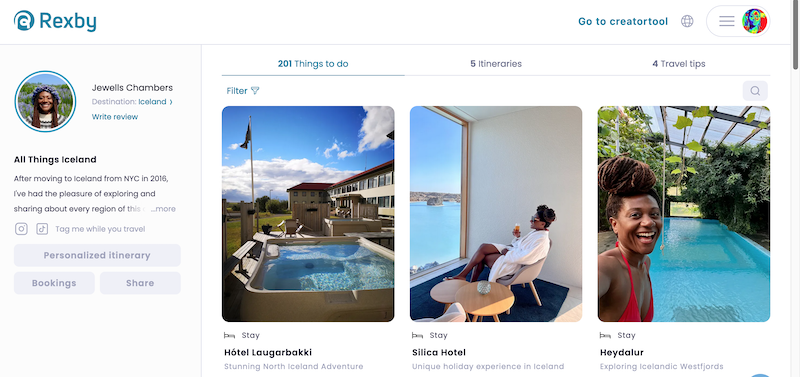

Today’s episode focuses on the historic site of Skriðuklaustur, which offers a captivating glimpse into Iceland’s rich Icelandic culture, history, and literature. This enchanting destination, nestled amidst the rugged beauty of the Icelandic landscape, serves as a bridge between the past and the present, inviting visitors to explore the layers of stories etched within this museum.
The Origins of Skriðuklaustur Monastery
Skriðuklaustur, a landmark of rural eastern Iceland, and has origins tracing back to a 16th-century monastery. Revealed through an extensive archaeological excavation from 2002 to 2012, the ruins of this Augustinian cloister tell a tale of resilience, spirituality, and compassion.
Established around 1493, this monastery served as a refuge for the sick and the poor. Its existence, cut short by the Reformation in the mid-16th century, marks a significant chapter in Iceland’s religious and social history.
The Link Between Skriðuklaustur Monastery & Gunnar Gunnarsson
The monastery’s story is interwoven with the life of Gunnar Gunnarsson, one of Iceland’s most renowned literary figures. Gunnarsson, born in 1889, emerged as a prolific writer whose works resonated with readers across the globe.
His decision to write in Danish brought his stories to an international audience, earning him acclaim and raising questions about his cultural identity. Gunnarsson’s legacy is complex, marked by his literary success and the controversies surrounding his public appearances in Nazi Germany.
In 1939, Gunnarsson returned to Iceland, making Skriðuklaustur his home. The mansion he built, a testament to his ambition and unique architectural vision, now stands as a cultural beacon. Designed by the German architect Fritz Höger, the mansion reflects a blend of Icelandic and European influences.
Today, it houses exhibitions on Gunnarsson’s work, offering visitors a window into the life of a man whose storytelling left an indelible mark on Icelandic literature.
I share some insight into Gunnar Gunnarsson’s and Halldór Laxness’ friendship and eventual falling out in a previous podcast episode.

More Than Just a Historic Site
Skriðuklaustur is more than a historic site; it is a living museum that continues to inspire and educate. The monastery ruins, accessible to visitors year-round, offer a tangible connection to Iceland’s monastic heritage. The site’s archaeological significance is underscored by the extensive research conducted over a ten-year period, which shed light on the daily lives of the monks, their literary endeavors, and the monastery’s role as a hospital.
The findings from the cloister cemetery are particularly fascinating because they reveal the hardships faced by those who sought refuge within the monastery’s walls. The study of nearly 300 individuals buried on the site provides invaluable insights into the health and social conditions of 16th-century Iceland. The presence of graves belonging to patients, the disabled, and even the unbaptized stillborn highlights the monastery’s inclusive approach to care and compassion.
Skriðuklaustur’s archaeological excavation also unearthed over 13,000 artifacts, offering a glimpse into the material culture of the time. Among the treasures discovered was a fragmented statue of Saint Barbara, symbolizing the spiritual life that once flourished within the monastery’s walls.
The application of photogrammetry technology has allowed these artifacts to be explored in detail, further enriching our understanding of this historic site.
An East Iceland Gem
As Skriðuklaustur opens its doors for the 2024 season, visitors are invited to immerse themselves in the site’s history and beauty. The upcoming art exhibition “Polyphony” by Björg Eiríksdóttir, alongside a new exhibit by Gunnar Gunnarsson’s son, promises to be a highlight, showcasing the ongoing dialogue between past and present.
Skriðuklaustur stands as a testament to Iceland’s rich cultural heritage, embodying the spirit of resilience, creativity, and compassion that defines this remarkable country. Whether drawn by the allure of ancient ruins, the legacy of a literary giant, or the promise of cultural exploration, visitors to Skriðuklaustur will find themselves on a journey through time, where history’s whispers echo in the wind, and the landscape itself tells a story of endurance and inspiration.
Explore More of East Iceland with My Iceland Map

I’ve curated My Iceland Map so that it has awesome things for you to check out in East Iceland and around the country.
This map was created for those who want to pick out places and hidden gems around Iceland to make up their own itinerary or add to one that they already created.
With full access, you get over 250 places that I recommend in Iceland, along with four itineraries to use for planning your trip. Those itineraries include a 10-day Ring Road trip, a 3-day South Iceland trip, The Famous Golden Circle and a Reykjanes Peninsula Day Trip.
A one-time purchase gives you lifetime access, which includes any updates I make to the map.
Here is a link to my Iceland map: rexby.com/jewells/Iceland.
Random Fact of the Episode
Skriðuklaustur has a lot of unique history and fascinating things to see in the museum. One of my favorite things was the virtual reality tour of the monastery that was found. You put on a VR headset and can tour around the recreated monastery as if you were there in the 1400s.
There is also a café downstairs that has a lunch buffet during summer.
Icelandic Word of the Episode
Skriðuklaustur when broken down is two words. The first is skriða, which means landslide. The second is klaustur, which mean cloister or monastery.
Share This With a Friend
Let's Be Social
Þakka þérr kærlega fyrir að hlusta og sjáumst fljótlega.